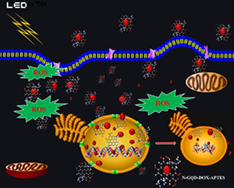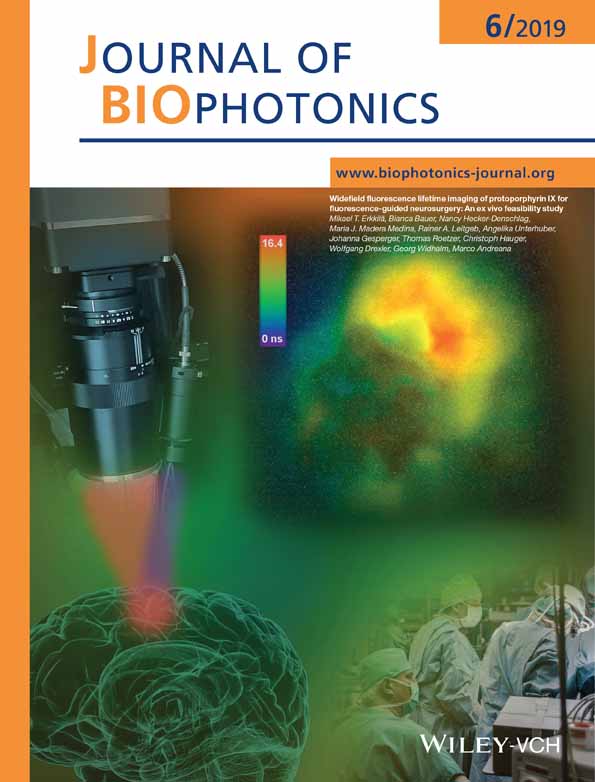Graphene quantum dot based charge-reversal nanomaterial for nucleus-targeted drug delivery and efficiency controllable photodynamic therapy
Abstract
Graphene quantum dots (GQDs), the new zero-dimensional carbon nanomaterial, have been demonstrated as a promising material for biomedical applications due to its good biocompatibility and low toxicity. However, the integration of multiple therapeutic approaches into a nanosized platform based on the GQD has not been explored yet to our best knowledge. In this report, we regulate the generation of reactive oxygen species (ROS) when using the GQD as a photosensitizer by varying the doping amount of nitrogen atoms to achieve efficiency controllable photodynamic therapy. On the other hand, charge-reversal (3-Aminopropyl) triethoxysilane (APTES) was used to conjugate on the surface of GQD for nucleus targeting drug delivery for the first time. The treatment outcome of produced ROS and nucleus-targeting drug delivery was investigated by fluorescence imaging. The results demonstrated that the N-GQD-DOX-APTES in dual roles as a drug carrier and photosensitizer could achieve nucleus-targeting delivery and strong ROS production simultaneously. This approach provides a promising strategy for the development of multifunctional therapy in one nano platform for biomedical applications.

CONFLICTS OF INTEREST
The authors have no conflicts of interest to report.
Author contributions
J.J. and Q.L. conceived and designed the study. J.J. performed most experiments. S.R. and A.F. conducted the cell biology experiment jointly with J.J. S.R. conducted the fluorescence imaging experiments. S.L. provided support for biological experiments. J.J. and Q.L. wrote the paper and edited the manuscript. All authors approved the manuscript.




